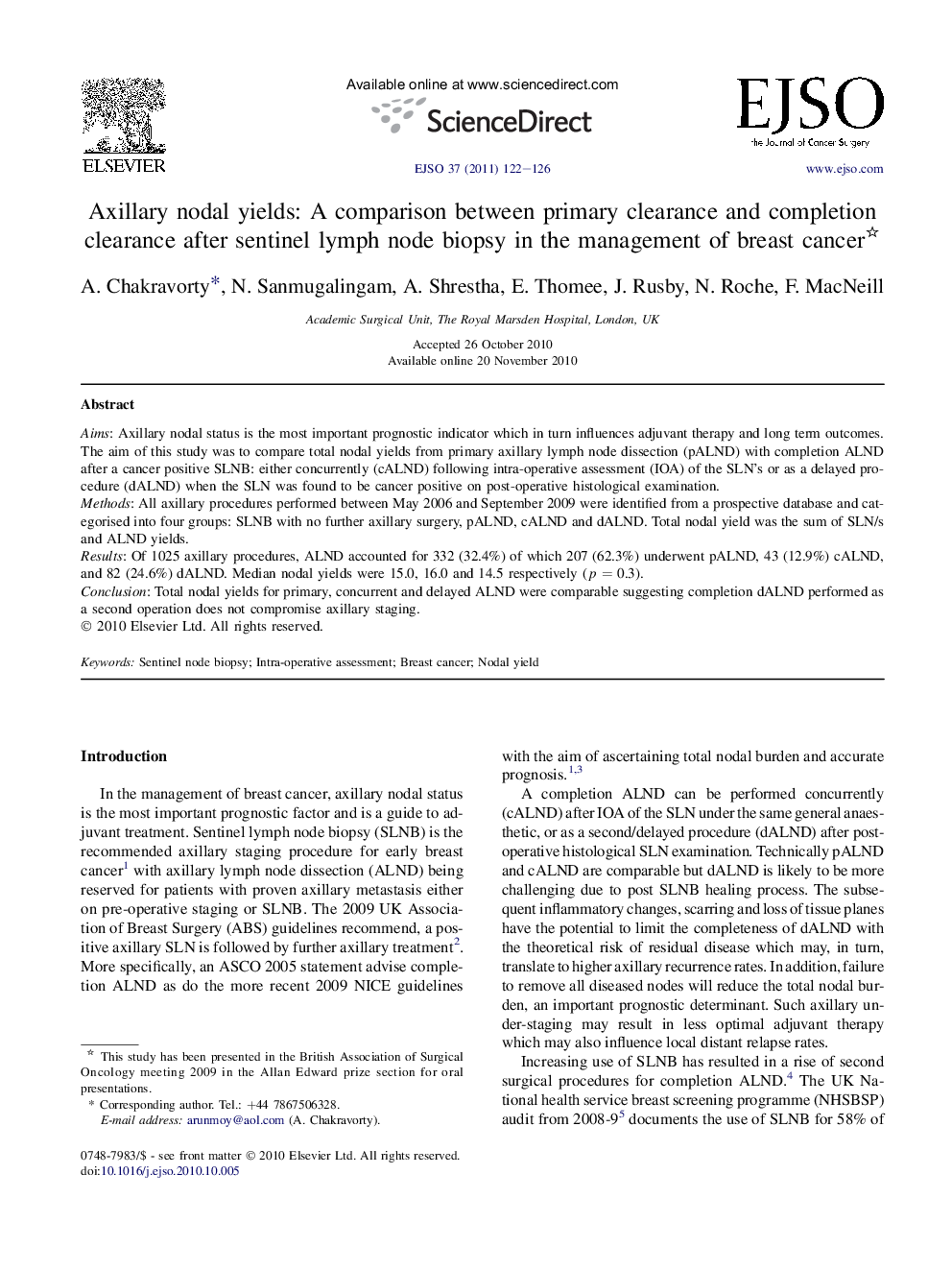| Article ID | Journal | Published Year | Pages | File Type |
|---|---|---|---|---|
| 3987085 | European Journal of Surgical Oncology (EJSO) | 2011 | 5 Pages |
AimsAxillary nodal status is the most important prognostic indicator which in turn influences adjuvant therapy and long term outcomes. The aim of this study was to compare total nodal yields from primary axillary lymph node dissection (pALND) with completion ALND after a cancer positive SLNB: either concurrently (cALND) following intra-operative assessment (IOA) of the SLN’s or as a delayed procedure (dALND) when the SLN was found to be cancer positive on post-operative histological examination.MethodsAll axillary procedures performed between May 2006 and September 2009 were identified from a prospective database and categorised into four groups: SLNB with no further axillary surgery, pALND, cALND and dALND. Total nodal yield was the sum of SLN/s and ALND yields.ResultsOf 1025 axillary procedures, ALND accounted for 332 (32.4%) of which 207 (62.3%) underwent pALND, 43 (12.9%) cALND, and 82 (24.6%) dALND. Median nodal yields were 15.0, 16.0 and 14.5 respectively (p = 0.3).ConclusionTotal nodal yields for primary, concurrent and delayed ALND were comparable suggesting completion dALND performed as a second operation does not compromise axillary staging.
